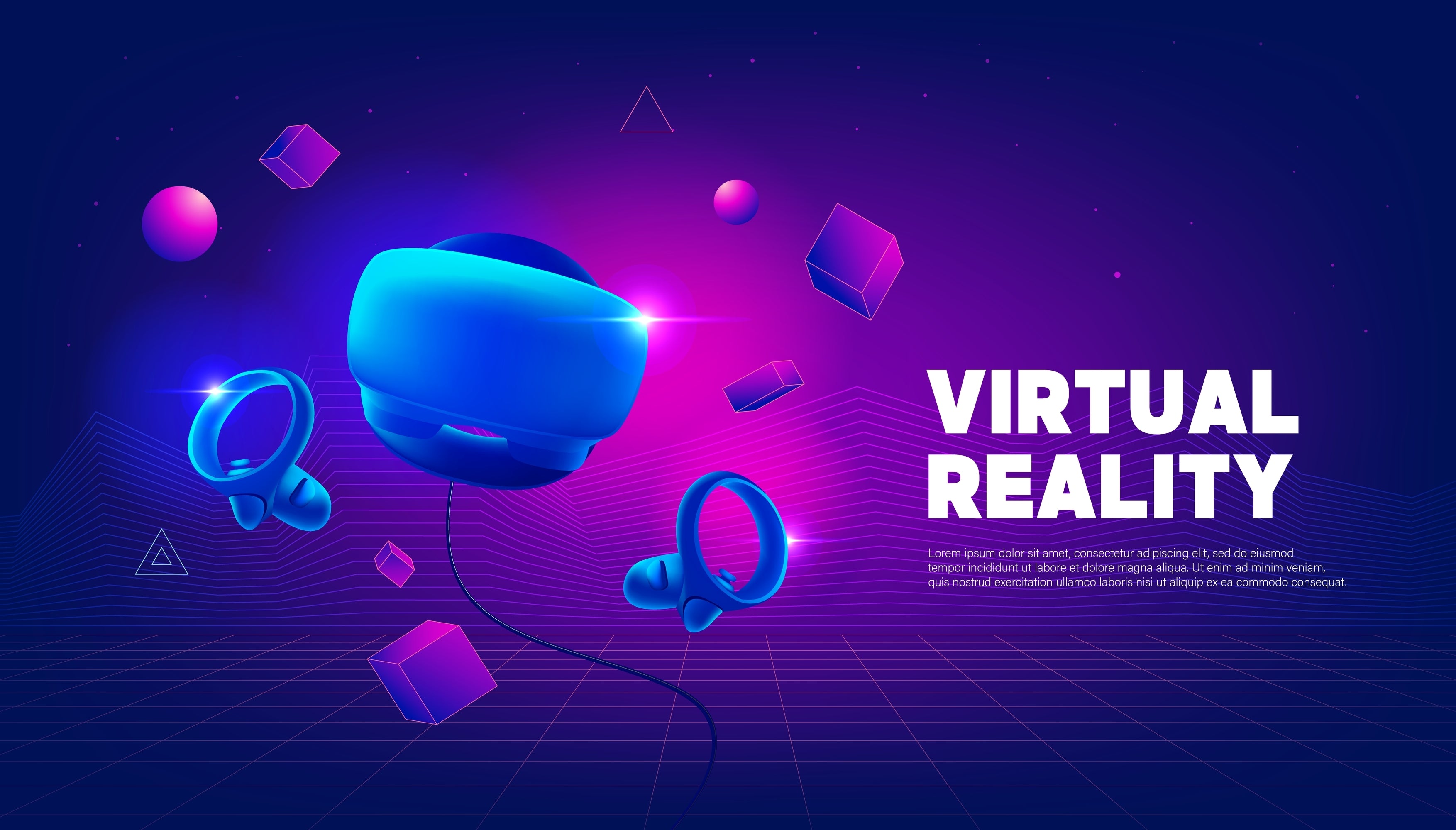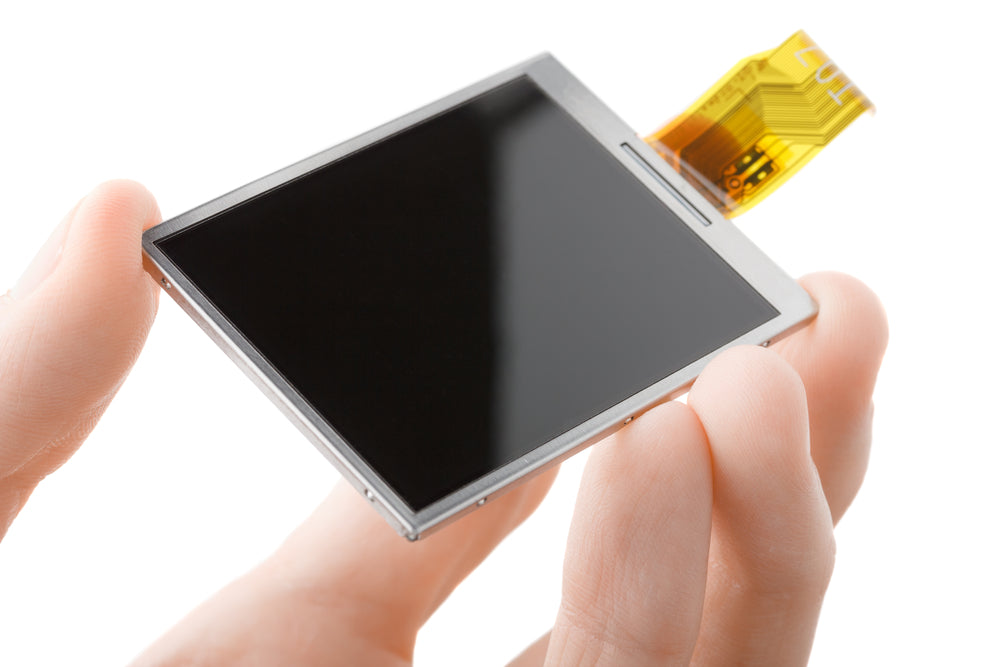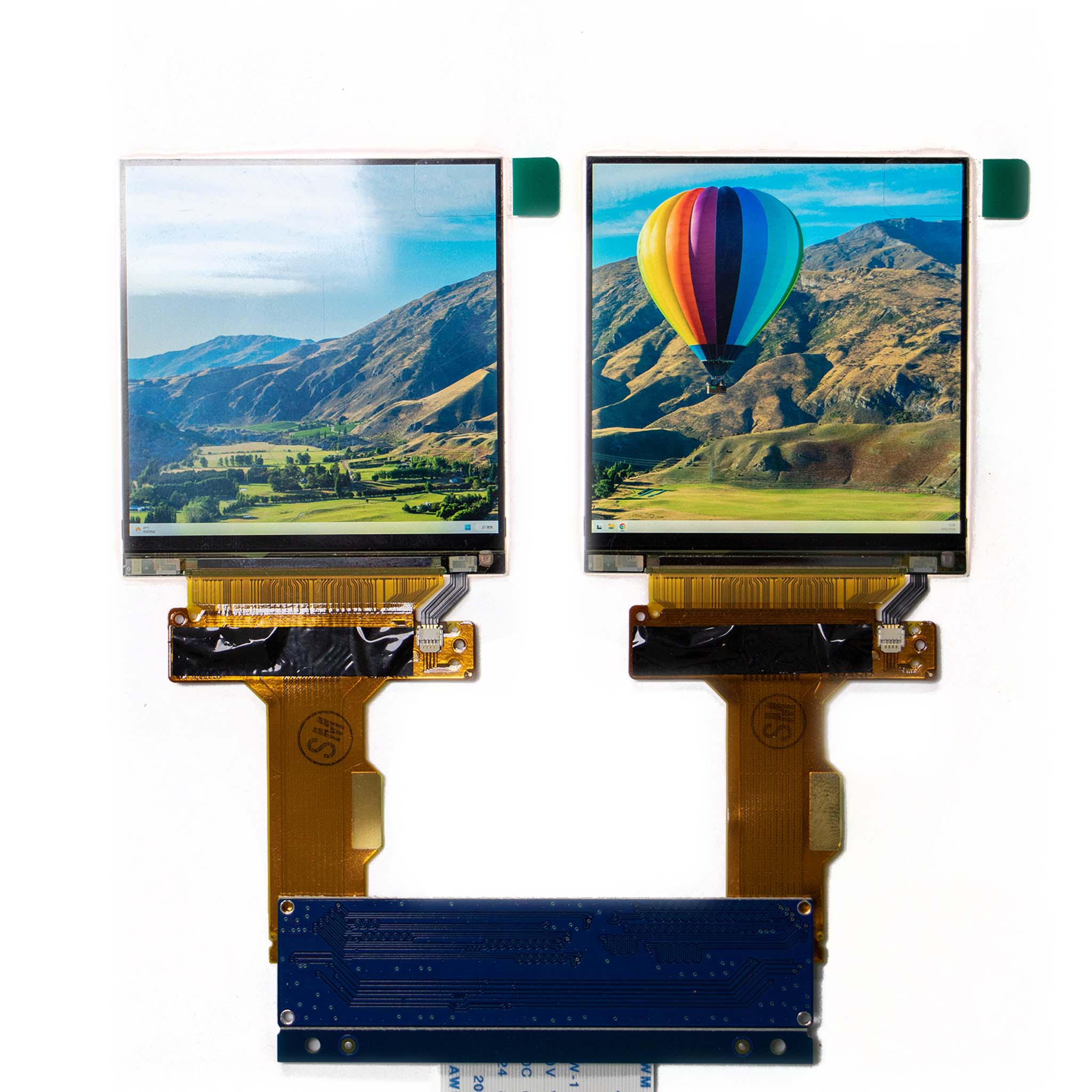Fast-LCD thrives in VR for its 90-120Hz refresh rates, ≤1ms response cutting motion blur, and zero burn-in risk vs OLED. Cost-effective, it pairs well with Pancake optics (e.g., Meta Quest 2), balancing clarity and affordability for mass adoption.
Speed You Can See
Traditional LCDs, common in monitors and TVs, have a relatively slow response time of around 50 milliseconds (ms), which is acceptable for static viewing but problematic for the rapid movements in VR. Fast-LCD technology tackles this problem head-on by slashing the response time down to an impressive 5 ms or less. This 90% reduction is achieved through a combination of new ferroelectric liquid crystal materials and sophisticated Overdrive circuitry that pushes pixels to transition between colors much faster.
The primary metric for measuring this clarity-in-motion is the persistence of the image. Older display methods would keep a frame illuminated for the entire duration of the refresh cycle, causing a smearing effect on the retina as the eye tracks movement. Fast-LCDs are designed to work with a technique called low-persistence illumination. Instead of staying on for, say, the full 11.1 ms of a 90Hz refresh cycle, the LCD's backlight flashes very briefly—for only 1-2 ms—after the pixels have fully settled into their new color values for the frame.
|
Display Type |
Typical Response Time |
Persistence at 90Hz |
Suitability for VR Motion |
|---|---|---|---|
|
Standard LCD |
~50 ms |
Full (~11.1 ms) |
Poor (Significant blur) |
|
Fast-LCD |
< 5 ms |
Low (1-2 ms) |
Good (Clear and comfortable) |
|
Ideal High-End VR |
< 3 ms |
Very Low (<1 ms) |
Excellent |
This combination of speed and precision is not just a minor improvement; it's what makes modern VR usable for sessions longer than a few minutes. As one industry analysis notes:
The shift to sub-5ms response times and low-persistence backlighting was the critical step that moved VR from a novel prototype to a viable consumer product. It directly addresses the primary source of simulator sickness.
While a 5 ms response time is sufficient for mainstream VR headsets operating at 90Hz to 120Hz, there is still room for improvement. The industry's target for next-generation, high-frame-rate VR (aiming for 120-240Hz) is an even faster < 3 ms response time.
Balancing Cost and Quality
As of 2022, a standard Fast-LCD with a Fresnel lens configuration served as the baseline with a cost index of 1. Stepping up to a mid-range Fast-LCD with a Pancake lens increased the cost to approximately 2.3 times the baseline. Even a high-end setup featuring Fast-LCD with a Mini LED backlight and Pancake lens reached a cost factor of about 2.9. The alternative, a Silicon-based OLED (OLEDoS) with a Pancake lens, carried a cost index of 4.5. This means that at the most fundamental level, choosing a Fast-LCD solution over an advanced OLED alternative can result in savings of over 50% on the display and optics module, which is one of the most expensive components in a headset.
Mainstream VR devices using Fast-LCD screens, like the Quest 2, achieve a single-eye PPI of approximately 1000. In comparison, many traditional OLED displays used in VR struggle to surpass a PPI of 500. Even Sony's premium PS VR2, which uses an OLED panel, achieves a PPI of 850, which is still a 15% reduction in pixel density compared to the mainstream Fast-LCD solutions.
The value proposition of Fast-LCD is further enhanced by its compatibility with advanced backlighting technologies like Mini LED. A standard LCD uses a uniform backlight, which limits its contrast ratio because blacks can appear gray. The integration of a Mini LED backlight, consisting of thousands of tiny LEDs, allows for precise local dimming. This means specific zones of the screen can be dimmed or turned off completely while others remain bright, dramatically improving contrast. When combined with a Pancake lens, this setup can achieve a contrast ratio that begins to approach OLED-like quality, but at a much lower cost. The modular nature of this design—where the LCD panel and the Mini LED backlight are separate components—also offers manufacturing and cost benefits. As the technology matures, the cost of Mini LED backlights for smaller VR displays has decreased, making the Fast-LCD + Mini LED combination a cost-index of 2.9 a highly compelling alternative to the OLEDoS option at 4.5.
The economic reality of VR headset manufacturing is that display cost is a primary driver of the final retail price. Fast-LCD provides a performance floor that is acceptable to the vast majority of consumers, while its cost ceiling allows for the creation of compelling mid-range and high-end devices without resorting to the premium associated with Silicon-based OLED.
It delivers a single-eye PPI of around 1000 and a refresh rate of 90-120Hz, which meets the baseline requirements for a comfortable and engaging experience. While the ideal specifications for next-generation VR might target a PPI of 2000-4000 and refresh rates of 120-240Hz, the current iteration of Fast-LCD successfully bridges the gap between what is technically ideal and what is economically feasible for volume production.
The Clarity Advantage
In the current VR landscape, Fast-LCD holds a decisive lead in this area. Mainstream VR headsets utilizing Fast-LCD panels, such as the widely adopted Meta Quest 2, achieve a single-eye PPI of approximately 1000. This high density is the industry benchmark for consumer-grade clarity. In stark contrast, traditional OLED displays used in VR applications have historically struggled to match this density, often offering a PPI of less than 500. Even Sony's advanced PS VR2, which employs a more modern OLED panel, reaches a PPI of 850. This means the most common Fast-LCD screens still provide an 18% higher pixel density than a leading premium OLED-based competitor, resulting in a visibly sharper image for the user.
The clarity advantage of Fast-LCD stems from fundamental differences in how the displays are manufactured. Producing high-resolution LCD panels is a well-understood process with a high degree of maturity, allowing manufacturers to create the tiny subpixels necessary for 1000 PPI on a 5.46-inch screen reliably and at scale. This high pixel density is essential because the display is magnified significantly by the headset's lenses. A lower PPI, such as the 500 found in older OLEDs, would make individual pixels easily distinguishable, undermining the sense of immersion.
This superior sharpness directly enhances the user experience in several key areas:
-
Text Legibility: Reading text in VR applications, from menus and user interfaces to web browsers and documents, is significantly clearer and less straining on the eyes with a 1000 PPI display compared to one with 850 PPI or lower.
-
Detail Rendering: Fine details in virtual environments, game textures, and distant objects are more defined, creating a more convincing and engaging world.
-
Reduced Screen-Door Effect (SDE): The higher pixel fill factor of Fast-LCD panels, combined with the dense 1000 PPI arrangement, minimizes the gaps between pixels. This reduces the visible grid pattern, allowing users to focus on the content rather than the screen itself.
The following table summarizes the clarity comparison between the dominant display technologies in the VR market:
|
Display Technology |
Typical Single-Eye PPI |
Representative Device |
Perceived Sharpness |
Screen-Door Effect |
|---|---|---|---|---|
|
Fast-LCD |
~1000 |
Meta Quest 2 |
High |
Minimal |
|
OLED (Advanced) |
~850 |
Sony PS VR2 |
Good |
Slight |
|
OLED (Traditional) |
< 500 |
Older VR Prototypes |
Low |
Noticeable |
While Fast-LCD currently leads in PPI, the industry's ultimate goal for "retina-level" clarity in VR is a staggering single-eye PPI of 2000 to 4000. However, for the vast majority of current content and applications, the 1000 PPI provided by Fast-LCD represents the most accessible and highest-sharpness solution available on the market today.
Good Color for the Price
Standard Fast-LCD panels consistently achieve over 90% of the DCI-P3 color space, the common standard for digital cinema and high-end media. This means that 90% of the colors in today's movies and games are represented accurately, providing a rich and saturated visual experience. When you factor in the substantial cost difference—where a high-end Fast-LCD configuration can be over 50% cheaper than an equivalent-tier Silicon-based OLED setup—the value proposition becomes clear. You are not getting mediocre color; you are getting high-fidelity color that is more than sufficient for 95% of VR applications, from gaming to social experiences, without the premium price tag.
The color performance of Fast-LCD is not static; it is significantly enhanced by pairing it with advanced backlighting technologies. A standard LCD uses a single white backlight, which can limit color purity. However, the integration of Mini LED backlighting with a fine Local Dimming partitioning scheme creates a transformative effect. This system uses thousands of miniature LEDs—anywhere from 500 to over 1,000 distinct zones in a VR-sized display—that can be controlled independently.
The advantages of this approach for color quality are substantial:
-
Increased Color Volume: Color volume measures a display's ability to show colors accurately at different brightness levels. A standard LCD might struggle to show a bright, saturated red because the backlight washes out the color. With Mini LED, the specific zone displaying that red can be driven with high power, resulting in a luminance that can exceed 600 nits for small highlights, while adjacent dark areas can be dimmed to near-black levels. This creates a much wider and more dynamic color volume.
-
Improved Brightness and Saturation: The peak brightness of a Mini LED-backed Fast-LCD is a major advantage. While an OLED pixel produces its own light and can be limited in peak output, the dedicated LED backlight can pump out a much higher intensity. This means colors like bright blue skies or vibrant reds can achieve a luminosity of over 100 nits higher than what is typical for OLED in VR, making them appear more vivid and less washed-out, especially in well-lit virtual environments.
-
Enhanced Contrast for Color Pop: The most significant contributor to perceived color richness is contrast. While Fast-LCD cannot achieve the infinite contrast of an OLED pixel that turns completely off, a sophisticated Mini LED system with 1,000 local dimming zones can achieve a contrast ratio of 100,000:1. This means that a bright yellow object on a dark background appears much more vibrant because the surrounding blacks are deep and not grayish. This high contrast makes colors "pop" with a perceived saturation that rivals OLED in many real-world usage scenarios.
Ultimately, the combination of a wide native color gamut covering 90% DCI-P3 and the dynamic boost from Mini LED backlighting allows Fast-LCD to deliver a color experience that is objectively excellent and subjectively very close to the best alternatives. For a consumer comparing a headset like the Quest 2 (using standard Fast-LCD) to a premium OLED-based model, the difference in color performance is often less noticeable than the stark difference in price. The technology provides a balanced and cost-effective solution for achieving high color fidelity, ensuring that immersive virtual worlds are not only sharp and smooth but also richly hued, all while maintaining the significant cost structures that have enabled the VR market to grow.
Better Availability
For a technology to become the backbone of a mass-market product like a VR headset, superior performance and cost are not enough—consistent and scalable supply is absolutely critical. This is where Fast-LCD holds an undeniable strategic advantage over Silicon-based OLED (OLEDoS). The manufacturing infrastructure for LCD panels is deeply entrenched and massively scaled, with global production capacity measured in the hundreds of millions of square meters annually. This mature supply chain, developed over more than 30 years, means that headset manufacturers can source 5.46-inch Fast-LCD panels with high confidence in volume, consistency, and delivery timelines.
In contrast, the production of OLEDoS displays is a far more specialized and constrained process. It requires advanced semiconductor fabrication facilities, and the production capacity is primarily allocated to ultra-high-demand, high-margin products like smartwatch displays. This fundamental difference in manufacturing base translates directly into a dramatic disparity in lead time and procurement risk. A VR company can secure a supply of Fast-LCD panels with a lead time of 8-10 weeks, while sourcing OLEDoS panels can involve queues of 6 months or more, creating a significant bottleneck for bringing a product to market at scale and responding to shifts in consumer demand.
The scalability of Fast-LCD production directly impacts a company's ability to launch and support a product globally. The Meta Quest 2, which uses a Fast-LCD screen, has sold an estimated 20 million units since its launch. Fulfilling orders of this magnitude with a display technology that has limited production lines, like OLEDoS, would be logistically nearly impossible and astronomically expensive. The established LCD supply chain includes multiple suppliers across different regions, reducing single-source dependency and allowing for competitive bidding, which further drives down costs. This robust availability is a primary reason why the cost ratio for a basic Fast-LCD with Fresnel lens configuration stood at a baseline of 1.0 in 2022, compared to 4.5 for an OLEDoS configuration. This 350% cost premium for OLEDoS is not just about the raw materials; it heavily reflects the scarcity and capital intensity of the manufacturing process.
The entire ecosystem, from panel drivers to optical calibration processes, is built around LCD technology. This maturity means that engineering teams can bring a new headset design from concept to mass production in a development cycle of 18-24 months with a high degree of predictability.
A Balanced User Experience
The ultimate test for any VR display technology is not how it performs in a single metric, but how it delivers a comfortable, engaging, and practical overall experience. Fast-LCD has become the dominant force in VR not by winning every technical category, but by offering the most balanced combination of performance, comfort, and cost. It provides a crucial equilibrium where key parameters—like a 90-120Hz refresh rate, a sharp ~1000 PPI, and a sub-5ms response time—work in concert to meet the baseline requirements for immersive usability. While alternative technologies like OLED may excel in specific areas like contrast, they often introduce significant trade-offs in areas like pixel density or, most notably, cost. Fast-LCD delivers a reliable foundation that minimizes common VR pitfalls like motion blur and the screen-door effect, enabling users to enjoy sessions lasting 60 minutes or more without the visual fatigue associated with older display solutions. This balanced profile is why it powers an estimated 80% of the standalone VR headsets on the market today.
|
Performance Metric |
Fast-LCD (Typical Performance) |
OLED (Typical Performance in VR) |
Impact on User Experience |
|---|---|---|---|
|
Pixel Density (PPI) |
~1000 PPI (e.g., Quest 2) |
~850 PPI (e.g., PS VR2) |
Fast-LCD provides a 15% sharper image, reducing screen-door effect. |
|
Motion Clarity |
Excellent (5ms response + low persistence) |
Excellent (inherently fast) |
Both are suitable, but Fast-LCD requires advanced tech to match OLED's innate speed. |
|
Contrast Ratio |
Good (~1,000:1); Very Good with Mini LED (~100,000:1) |
Excellent (Theoretically Infinite) |
OLED has superior blacks; Mini LED narrows the gap significantly for most content. |
|
System Cost Impact |
Low (Baseline cost index of 1.0) |
High (Cost index of 4.5 for OLEDoS) |
Fast-LCD enables a consumer price point of 500, crucial for mass adoption. |
For the majority of VR applications—from immersive gaming and fitness to social platforms and enterprise training—the combination of 1000 PPI clarity and 90Hz smoothness is more than sufficient. The human visual system reaches a point of diminishing returns, and Fast-LCD sits squarely in the sweet spot where most users perceive a high-quality image. Furthermore, the lower power consumption of LCD technology compared to driving high-resolution OLED panels directly contributes to longer battery life in standalone headsets. A device like the Quest 2 can deliver 2-3 hours of continuous use on a single charge, a practical consideration that greatly enhances the user experience.
While enthusiasts might argue for the perfect blacks of OLED, the real-world contrast achieved by a Fast-LCD panel with Mini LED backlighting comes remarkably close, and for a fraction of the system cost. This value calculation is paramount; the savings of over 50% on the display module allows manufacturers to invest in other critical areas like processing power, ergonomics, and content ecosystems, which collectively contribute far more to the overall user experience than a single, albeit superior, display metric. Fast-LCD is the engineering choice that prioritizes the holistic product, making high-quality VR accessible to millions instead of a niche few.
Read more

AR and VR are two distinct technologies used in the realm of digital experiences. AR stands for Augmented Reality, while VR stands for Virtual Reality. Augmented Reality (AR) is a technology that s...

OLED technology is a type of organic light-emitting diode technology that works by applying an electric field to cause organic light-emitting materials to emit light between electrodes. An OLED dis...



Leave a comment
This site is protected by hCaptcha and the hCaptcha Privacy Policy and Terms of Service apply.